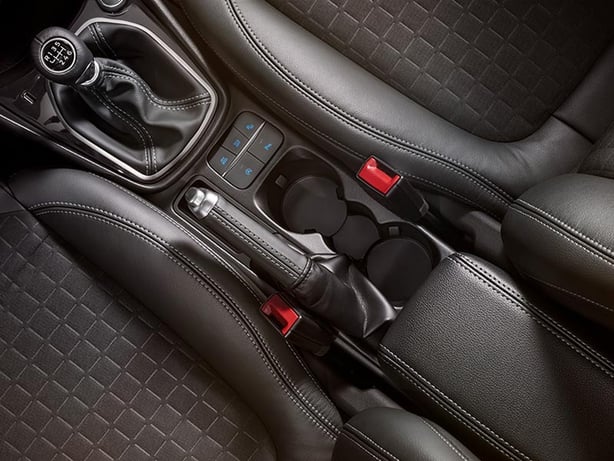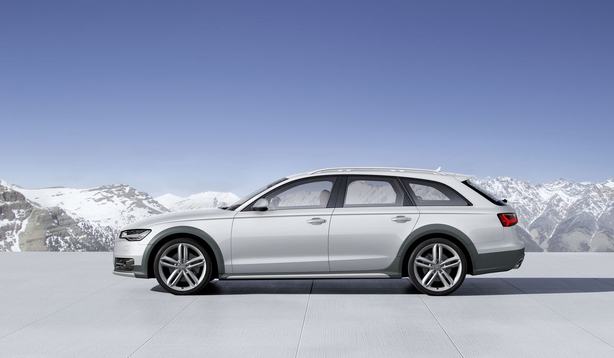Whatever your views on the degree to which economic recovery is a reality, there is one aspect of the boom that seems to have returned with a vengance - traffic. The volumes on Dublin's M50 are an example of the growth in traffic, but so too are roads in and around cities like Galway and Cork. Gridlock, especially for those facing a daily commute, is both stressful and tiring.
Which brings me to the issue of gearboxes and why so many of us are saddled with manual gearboxes - that add to the stress of driving and also make it more tiring - when an automatic could reduce both factors significantly ? American drivers have long recognised the benefits of an automatic transmission to the point where US visitors to Ireland often find themselves struggling to come to terms with what they call a "stick shift" - it's an alien concept for them. I'm with them on this one. I find driving an automatic car far more relaxing and so too is my driving style. It's all about smoothness and ease of pace.

The majority of us drive cars with manual gearboxes but are our prejudices a little outdated ?
The fact is that we have an aversion to automatic gearboxes because they have traditionally cost more, are seen to use more fuel and are more complex to maintain. There is still a degree of truth to all of these concerns but less than there used to be.
Modern automatic gearboxes are now more sophisticated and several diesel cars I've driven recently have been far more fuel efficient than they would have been five years ago. An Audi A6 Quattro comes to mind - it returned figures comparable to any diesel saloon, despite all of its all wheel drive acoutrements. The DSG automatic system used in current Volkswagen group cars is a big improvement on the older system and even the older one is reliable as long as it is properly maintained.
Petrol cars driven by automatic gearboxes can still be punchy when it comes to consumption but with the arrival of more efficient and smaller petrol engines they too are becoming more economical.

The Audi A6 Allroad Quattro has a very advanced automatic gearbox that, surprisingly, returned very good fuel economy.
One thing you do need to remember is that there are different types of automatic gearboxes and you should ensure you test drive a car properly if you are considering an automatic. For example, the advanced automatic system in the Audi is exactly that - advanced. It is smooth, intelligent and advanced software is making the gear selection for you.
Some companies like Citroen, however, what is called a dual clutch system (there is'nt actually a clutch pedal at all) that can be a bit of a challenge to get used to as it has a delay as you pull away and at low speeds. The car can feel like it's bucking instead of reacting smoothly. I don't like it at all and find it almost takes away the relaxed approach you should be enjoying.
So, it is important to check out which system you might like to try out and, more importantly, which you don't like.
In the longer term, all of this may be academic as electric cars begin to take over. They don't have a gearbox at all. In the meantime, my preferred option is an automatic.
Budget Direct, an Australian insurance company, recently produced a layman's guide to the manual vs. automatic debate and it's one of the most accessible contributions that I've come across. Here it is:
For your car to be able to get from point A to point B without having to stay trudging along in first gear, it needs a working transmission. The transmission allows the vehicle to change gears, thereby transferring power from the engine to the drive axle in the most efficient way possible. It does this by varying the gear ratio. In lower gears, this increases available power while reducing speed. Higher gears, on the other hand, reduce power and increase speed. This enables cars to distribute power and speed in the most efficient way for any given situation.
But whilst everyone agrees that a transmission is absolutely vital to the inner workings of any car, there is no general consensus regarding what kind of transmission is better—automatic or manual.
It’s not an easy question to answer. After all, both transmissions have their own unique advantages and disadvantages, and where one may be perfect in one situation, it may end up being absolute rubbish in another situation. So, before you make any decisions regarding where you stand on the transmission debate, take a few moments and familiarise yourself with the benefits associated with the two different kinds of transmission.
Automatic Transmissions
Automatic transmissions have been eclipsing their older manual cousins for the past few years. Yet, despite their apparent popularity, automatic transmissions are not necessarily a better choice for many drivers. However, they do offer advantages over manual transmissions in several key areas. For example, they are…
Easier to use. Although there’s nothing inherently difficult about shifting gears and working a clutch, it still takes a bit of practice before most drivers are comfortable learning to use each of their limbs independently in order to control a manual transmission vehicle. Automatic transmissions, by comparison, are much simpler and take drivers significantly less time to learn.
Less manually restrictive. Most new drivers are taught that the safest way to drive is to keep both hands firmly on the wheel at all times. This is possible when driving an automatic transmission vehicle, but is not possible with a manual transmission.
Better for hilly areas. If you’re a less experienced driver, you may find that navigating steep inclines in a manual transmission is difficult, especially if you’re attempting to do so from a dead stop. Automatic transmissions take care of this issue, enabling your car to operate efficiently no matter how steep the hill might be.
Greatly reduced risk of stalling. There are few things more embarrassing and awkward than accidentally stalling your vehicle right when the traffic light changes. This isn’t a common problem for those driving automatic transmission, where stalling will only occur if there’s a mechanical problem in the vehicle.
Easier to use in heavy traffic. Overall, more work goes into starting, accelerating, decelerating, and stopping manual transmissions. This isn’t normally a problem, but in heavy traffic where a car isn’t able to get up to speed, drivers may notice that the constant starting and stopping becomes a difficult chore. Automatic transmissions allow the driver to move through heavy traffic without having to do more than push a single pedal.
Manual Transmissions:
For those drivers who prefer to be more involved in the inner workings of their vehicle, the manual transmission delegates the shifting of engine gears back to the pilot. Manual transmissions predate the newer automatic models, yet they are still favoured by many drivers due to the fact that they’re…
Less expensive to purchase. If you’re car shopping on a budget, then there’s really no contest between the manual and the automatic. On average, a manual transmission will cost you about a thousand dollars less than an automatic of the same model.
Cheaper to maintain. With all of the added machinery that goes into the automatic transmission, it can end up costing you big bikkies just to keep it running properly. Manual transmission cars require very little maintenance, and generally maintenance and repairs end up being significantly less costly. Be warned, however, because one thing that a manual has that the automatic doesn’t have to worry about is the clutch, and if that thing quits on you, then you could be in trouble.
Better fuel efficiency. Overall, manual transmission engines are less complex, weigh less, and have more gears than automatics. The end result is that you’ll end up getting more kilometres out of the petrol you pump in than you would with an automatic. Manual transmissions have been known to save drivers between 5% and 15% on their fuel costs.
Less likely to be stolen. With the increasing number of automatic transmissions finding their way onto roads, there’s an entire generation that has never learned the finer points of manual transmission operation. This means that should a car-thief decide to give your car a closer inspection in preparation for stealing it, there’s a fairly good chance that simply having a manual transmission will be enough to deter the criminal.
Better control. Automatic transmissions are designed to choose the best gear for any situation, but they tend to err on the side of caution, shifting to too high of a gear and wasting engine power. At the same time, they are built to respond to conditions as they are encountered, which doesn’t allow for drivers to either anticipate an oncoming condition, or to purposely select a lower gear for an added boost of power. Manual transmissions give drivers greater control over the vehicle.
Basically, automatic transmissions are easier to use and more comfortable for the driver, while manual transmission vehicles are less expensive and more involved. Of course, there are exceptions to any rule and the only way to be sure which one is right for you is to go for a test drive. After all, you may need to get from point A to point B, but it’s completely up to you how you make the journey.


